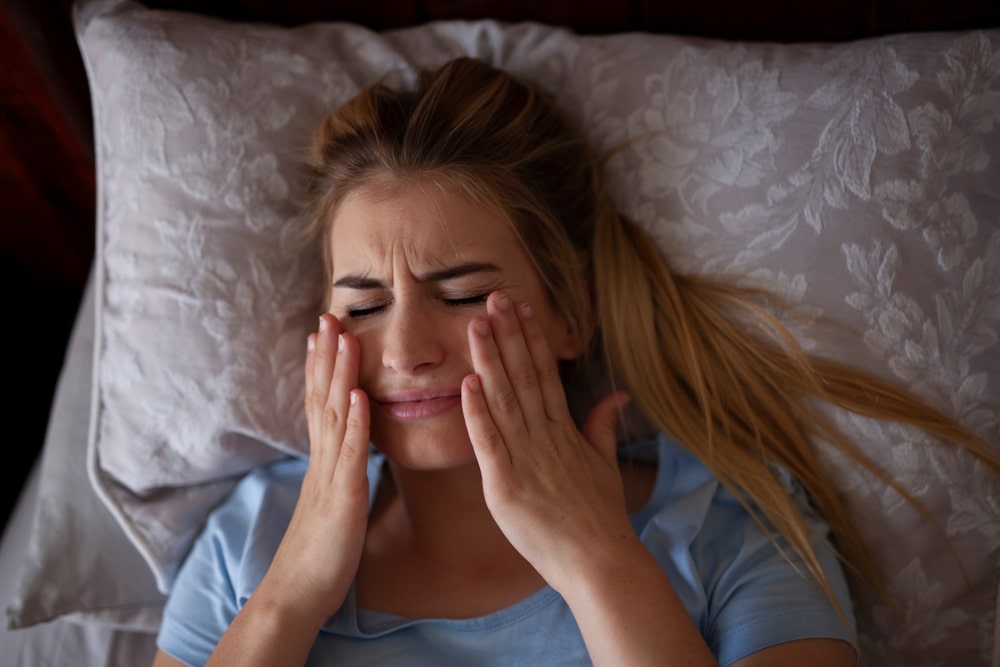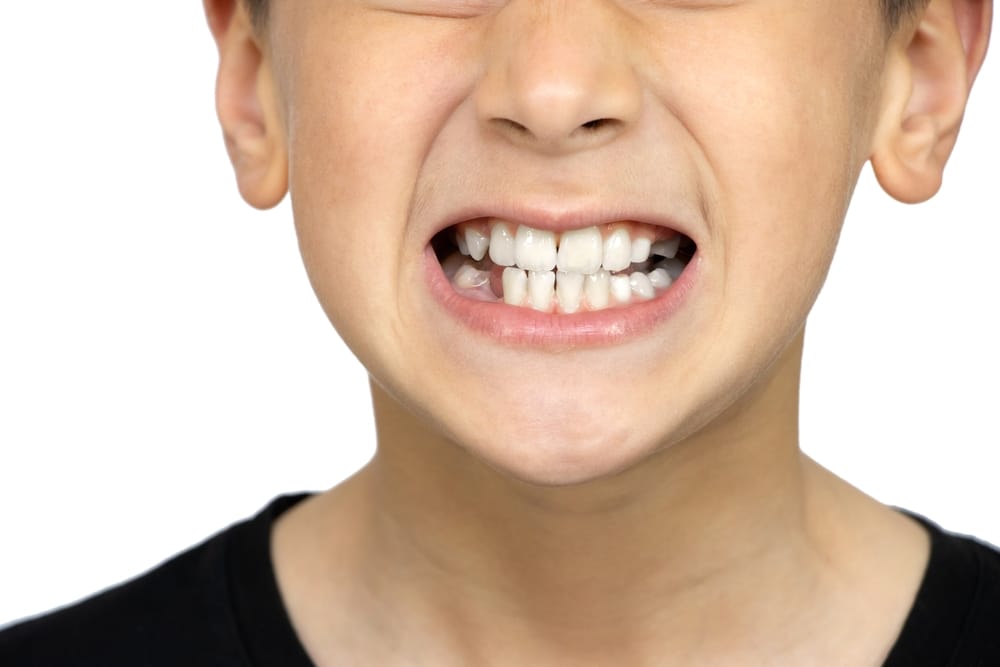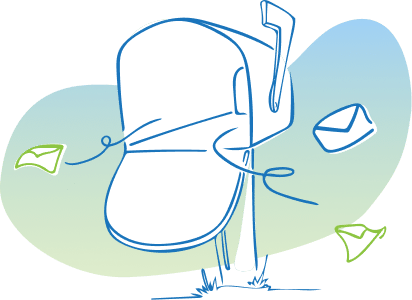Chronic headache and jaw pain are common ailments that can have a serious impact on our daily lives.
While there are many causes for these types of severe pain events, there are also some simple measures we can take to help reduce or even eliminate them.
In this blog post, we’ll go over some effective strategies for avoiding chronic headaches and jaw pain.
From making sure you have proper posture to exercising regularly, learn some simple tips that can help keep these conditions at bay. Let’s get started!
Definition of chronic daily headaches and jaw pain
Chronic headaches and jaw pain can be debilitating and can significantly affect a person’s quality of life.
It is characterized by persistent, recurrent, or continuous chronic daily headaches or internal and/or external jaw discomfort and facial pain.
Prolonged and frequent use of over-the-counter medications to alleviate pain can lead to a medication overuse headache – also known as a rebound headache that is caused by the regular and prolonged use of medications that are specifically for migraines.
Taking pain relievers can provide temporary relief for occasional headaches, yet if you take them repeatedly throughout the week, they may induce a medication overuse headache.
If you have a headache disorder, the use of any pain-relieving medication could lead to rebound headaches.
However, taking medications regularly for another condition such as arthritis or lower back pain will not result in medication overuse headache if one does not suffer from a pre-existing headache disorder.
These symptoms are commonly caused by tension in the neck muscles due to clenching or grinding of the teeth, known as bruxism, psychological stress, and distal muscle tightness. Contributing factors such as poor posture when standing, sitting, or sleeping may mean that individual experiences chronic headaches more often.
However, treatment for chronic daily headaches and jaw pain exists – contact with a medical professional will ensure the fastest relief!
What is Bruxism
Bruxism is an oral condition that involves grinding and clenching teeth involuntarily.
It can happen during the day or night, but many people find themselves grinding their teeth during sleep.
Bruxism can cause a variety of issues, from temporomandibular joint disorder to tooth wear, headache pain, and facial soreness.
In some cases, the persistent grinding can even result in hearing loss.
While there is no exact known cure for Bruxism, there are several treatments available to help manage its effects and make it easier to live with.
Relaxation techniques, biofeedback, lifestyle changes, mouth guards, and surgery are all possible forms of treatment.
It’s important to seek medical advice as soon as possible if you suspect you may be suffering from this painful condition.
Overview of causes of chronic daily headaches and jaw pain
Chronic headache and jaw pain can be caused by a variety of medical conditions.
Poor posture, stress, Temporomandibular Joint Dysfunction (TMJ), migraine, medication overuse headache, tension headache, cluster headache, as well as nerve issues stemming from the neck are some of the most common culprits behind chronic headaches and jaw pain.
Posture Related Headache
If you work in an office, ending up with a headache or neck pain from sitting at a desk for long hours can be all too common. This might be caused by an unsupported chair or a computer that is in the wrong position.
Poor posture-related headaches and neck pain can be caused by repetitive motion, and repetitive physical work for long periods can result in neck and shoulder pain, as well as headaches. Even with the best form while lifting heavy objects, doing manual labor like moving bulky items may cause a person to “throw out their back” or strain muscles. Additionally, repetitive motions – even when done properly – can unintentionally lead to tensing muscles within the neck area due to prolonged activity.
Here are a few tips to help avoid workplace-related posture.
- Proper posture is essential for optimal physical and mental health. To avoid “forward head posture”, ensure that your ears are aligned over your shoulders and that your chin is parallel to the ground. Additionally, drop both of your shoulder blades back evenly into place while aligning them lower than before; then maintain an upright height with even weight distribution across both hips. When sitting down, hold each foot flat on the floor with a slight bend in each knee beneath hip level.
- To reduce neck strain and the urge to slouch, place your computer monitor so that the top third is at eye level. Consider stacking books or utilizing a stand to gain an optimal line of sight with minimal effort.
- Investing in affordable lumbar back support can be beneficial for preventing future lower back pain and reinforcing good posture. Alternatively, you could use a firm pillow or roll up a towel to provide the same level of comfort and protection.
- For optimal posture, make sure your feet are firmly planted on the ground. If not, consider adding a footrest beneath your desk that allows you to naturally align the rest of your body from hips up to neck and head.
- Give your body and mind a break by taking regular pauses to stretch, walk around the room, or perform other physical activities. These brief respites are essential for relieving stress and anxieties from sitting in one place for too long. Not only do they refresh you both physically and mentally but stretching can help release muscle tension as well!
- Be mindful of your posture as you move around. Keep a neutral, balanced stance when standing and bending at the knees to lift any objects instead of hunching or overreaching. This simple action helps in averting neck, shoulder, and back pains.
- Staying on your feet for hours at a time can cause pressure and soreness, but an anti-fatigue mat will help alleviate these discomforts.
- As often as you can, take brief respites for stretching and resting. Particularly if your work entails repeating the same motions over and over again, it’s essential to allow your body to recuperate so that it operates at its optimal level. Breaks are key!
Stress Related Headache
Headaches, in particular, are often brought about by increased stress levels, but while “stress headaches” may be a good description of what’s going on in your body, it’s not an entirely accurate diagnosis. Here’s what you need to know about headaches triggered by stress and how to help relieve the pain.
What Is a “Stress/Tension” Headache?
Stress headaches, also known as “tension-type” or tension headaches, may not have their classification in the International Classification of Headache Disorders (ICHD-3), but they are still very common. Although these headaches lack typical migraine symptoms such as nausea, sensitivity to light and sound, etc., they often cause pressure pain on both sides of your head that worsens with movement. This type of mild to moderate headache is usually pervasive in most people’s daily lives.
The U.S. National Library of Medicine’s MedlinePlus database states that tension headaches, characterized by pain or discomfort in the head, scalp, or neck and often linked to muscle tightness affect up to 70% of people for a period ranging from thirty minutes to seventy-two hours. To be diagnosed with chronic tension headaches disorder one must have had at least ten or more episodes.
Temporomandibular Joint Dysfunction (TMJ) related Headache
Temporomandibular Disorder (TMD) is an umbrella term for various clinical issues that involve the jaw muscles, temporomandibular joint (TMJ), and associated structures. It’s also referred to as Temporomandibular Pain Disorder Syndrome.
According to the American Migraine Foundation, TMD presents itself with tenderness in certain areas of your face or head, crackling noise when opening or closing your mouth, and reduced mobility due to inflammation in powerful muscle tissues connected to TMJ.
Statistics show that only about 10% of people who suffer from TMD have pain located at their TMJs while nearly 50% of US population has been reported as having TMD.
Despite the lack of research to differentiate headache pain from facial pain, it has been found that in non-patient studies, three out of four participants have at least one joint dysfunction sign (clicking or limited range of motion) and roughly a third are exhibiting symptoms (pain or tenderness). However, only a tiny fraction – fewer than 1 in 20 – require any form of treatment. Furthermore, among those with signs/symptoms, very few list chronic daily headaches as their primary source for discomfort.
Headaches and TMD may be the same issue or two distinct conditions. Research has revealed how pain can travel from your head to your TMJ, as well as vice versa – with either scenario precipitating migraines. It is therefore important to consider the temporomandibular joint and surrounding facial musculature when trying to identify what’s causing a headache. In some cases, headaches could originate in the TMJ itself; alternatively, they might also be referred there due to an existing primary diagnosis of headaches.
To avoid muddling the connection between cause and effect, it is paramount to note that both can be concurrent or can follow treatment. According to longitudinal studies, TMD commonly affects females aged 15-30. It has been suggested that this disorder typically resolves itself within seven to ten years but rarely persists into later life due in large part to the TMJ’s ability for remodeling.
Migraine Headache
A migraine is a fierce headache that can bring on throbbing or pulsing sensations, commonly concentrated on one side of the head. In addition to acute pain, it may accompany feelings of nausea and queasiness as well as heightened sensitivity towards light and sound. These episodes typically persist for hours up to days at a time, making them debilitating enough to affect regular activities. For certain individuals, an aura might be present prior to or during the onset of their attack; this warning sign serves as an additional indicator that a migraines has begun.
Before a migraine hits, you may experience an aura in the form of vivid visual disturbances like flashes and blind spots or physical sensations such as tingling and speech difficulties. The perfect combination of medications, home remedies, and lifestyle changes can help reduce both the frequency and intensity of migraines. Don’t let them put a damper on your life- take charge now!
Migraines can have four different stages: prodrome, aura, attack and post-drome. Not everyone who gets migraines will experience all of the stages.
As if an impending migraine wasn’t difficult enough to cope with, certain changes may occur one or two days prior that are sure signs of a headache. These can range from constipation and food cravings, to neck stiffness and frequent yawning. In addition, your mood might shift dramatically – some sufferers feel depression while others become overwhelmingly elated! Finally, keep an eye out for increased urination as well as fluid retention before the onset of pain arrives.
Migraine auras are occasionally experienced by some before or during migraines. This phenomenon is an indication of the nervous system and can present itself in several ways, including visually with bright spots or flashes of light, sensations like pins and needles on one arm/leg, numbness/weakness in face/body parts as well as difficulty speaking. Typically these symptoms come about gradually over a few minutes before eventually dissipating after 60 minutes.
If left untreated, migraines can cause a person to experience pain that varies from 4 to 72 hours in duration.
It’s different for everyone though as some might rarely have them while others may suffer multiple times in one month. Common symptoms of a migraine include intense throbbing or pulsing pain on either side of your head, light/sound sensitivity, nausea, and vomiting.
After experiencing a migraine attack, you may feel completely drained and disoriented for up to 24 hours. For some individuals, this is even followed by an elated feeling. It’s important to note that sudden head movements can cause the pain to resurface momentarily.
When to see a doctor
If you experience migraine symptoms regularly, document your attacks and how they were handled in order to provide useful information for a doctor’s visit. Additionally, even if you have had migraines before, it is best to consult a physician when the pattern changes or the headaches suddenly feel different. With proper diagnosis and treatment of your migraines, you can find relief from these painful episodes.
If any of the following occur, you should not hesitate and seek medical attention right away. It may be a sign of an underlying medical issue:
- An abrupt, severe headache like a thunderclap
- Headache with fever, stiff neck, confusion, seizures or double vision as well as numbness in any area of your body – this could be indicative of having had a stroke
- A chronic headache that worsens after coughing or exercising; straining; sudden movements
- If you are over 50 years old and experience new headaches call your doctor at once
Medication Overuse Headache (MOH)
1. What is a medication overuse headache?
A medication overuse headache (MOH) is a type of headache that occurs as a result of taking pain medication on a regular basis. MOH headaches can be caused by any type of pain medication, including over-the-counter drugs like ibuprofen and aspirin.
2. How common are MOH headaches?
MOH headaches are quite common, affecting approximately 3% of the population. They are most common in people who suffer from migraines, but can also occur in people who have tension headaches or cluster headaches.
3. What are the symptoms of a MOH headache?
The symptoms of a MOH headache vary depending on the type of pain medication that is being taken. However, common symptoms include rebound headaches, increased sensitivity to light and sound, and nausea.
4. How is a MOH headache diagnosed?
A MOH headache is typically diagnosed based on the symptoms that are experienced and the type of pain medication that is being taken. Your headache specialist may also order tests, such as blood tests or MRI, to rule out other potential causes of your headaches.
5. What are the treatments for a MOH headache?
The best treatment for a MOH headache is to stop taking the pain medication that is causing the problem. This can be difficult, as it may require you to deal with your underlying headache condition without pain relief. Your headache specialist may also recommend other treatments, such as acupuncture or massage, to help relieve your symptoms.
6. Are there any complications associated with MOH headaches?
If left untreated, MOH headaches can lead to serious complications, such as chronic daily headaches and dependence on pain medication. Additionally, MOH headaches can make underlying conditions, such as migraines or tension headaches, worse.
7. How can I prevent a MOH headache?
The best way to prevent a MOH headache is to avoid taking pain medication regularly. If you do need to take pain medication for an underlying condition, be sure to follow instructions from your headache specialist carefully and only take the recommended dose. You should also talk to your doctor about other potential treatment options for your condition so that you can avoid relying on pain medication.
Medication Overuse, How Much is Too Much?
Medication overuse is determined by the number of times a patient takes acute medication per month. The cut-off point for each class of drugs varies. When someone uses triptans, ergot alkaloids, combination analgesics, or opioids ten times every thirty days it can be classified as excessive usage and would constitute medication overuse.
If you use common pain relievers, like NSAIDs, for fifteen or more days each month, it’s considered an overuse of medication.
The same is true if your go-to medications are opioids, barbiturate-containing analgesics with aspirin and caffeine; research has shown that the combination increases your risk of developing chronic migraine headaches.

- Be wary of over-the-counter remedies such as aspirin, acetaminophen, and NSAIDS (ibuprofen, naproxen, indomethacin,) – exceeding the recommended daily dose can cause rebound headaches. Medication Overuse Headaches (MOH) have been linked to using these medications for more than 15 days a month.
- Pain relievers that combine caffeine, aspirin and acetaminophen or butalbital can be especially risky for developing medication-overuse headache if taken 10 days per month or more. The combination of ingredients increases the potential risk in comparison to other over-the-counter medications. Be mindful when utilizing these types of painkillers as long term use may have adverse effects on your health.
- There is a moderate risk of medication overuse headache developing when Triptans and Ergotamines are used on 10 or more days each month.
- MOH is a common side effect of prolonged opioid use such as oxycodone, tramadol, butorphanol, morphine, codeine and hydrocodone – especially when used for over 10 days in any given month.
- Excessive caffeine consumption (over 200mg per day) significantly raises the likelihood of Medication Overuse Headache.
Cluster Headache
Cluster headache are rare, yet incredibly painful and recurrent. Characteristically, they occur in clusters of intense pain that last from one to three hours each time.
Depending on the individual, these chronic cluster headache episodes may range from every other day to multiple times daily before entering remissions lasting months or even years.
Notably, males are more likely than females to experience a cluster headache around age 30 or later.
Cluster Headache Key Points
1. Cluster headaches are a type of headache that recurs over some time.
2. They are usually characterized by severe pain on one side of the head, often accompanied by redness in the eye and a runny nose.
3. Cluster headaches are relatively rare, affecting less than 1% of the population.
4. The exact cause of cluster headache is unknown, but they are thought to be related to changes in the trigeminal nerve, a large nerve that runs from the brain to the face.
5. Cluster headaches may also be associated with changes in the hypothalamus, a region of the brain that regulates many important functions, including sleep and mood.
6. Cluster headache is more common in men than women and usually begin between the ages of 20 and 40.
7. There is no cure for cluster headache, but there are treatments that can help to relieve the pain and prevent future attacks.
8. Some people find relief by taking over-the-counter pain medications, such as ibuprofen or aspirin.
9. Others may need to take prescription medications, such as triptans or oxygen therapy.
10. In some cases, surgery may be necessary to treat cluster headache
Chronic Headache Prevention
Exercise Regularly
Regular exercise is an effective way to help prevent headaches and jaw pain.
By engaging in regular, light physical activity such as walking or yoga, your body can release tension that can lead to more serious problems.
Exercise can also improve your overall health by increasing endorphin levels and reducing stress in the short term, which all contribute to a healthier lifestyle that naturally reduces stress and keeps headaches and jaw pain at bay.
Even if you are not an avid gym-goer or athlete, taking care to move around daily and stretch regularly will still bring great benefits.
Consistency is key when it comes to fighting off aches and pains, so don’t forget to make exercise part of your weekly routine!

Reduce Stress Levels
With the strain of life responsibilities, it’s not hard to fall behind on properly managing levels of stress.
Causing stiff neck and shoulder muscles, which contribute to headaches and jaw pain, is often one consequence of inadequate stress management techniques.
To reduce the amount of tension our bodies feel, we need to actively work on finding ways that help us cope with everyday anxieties.
Exercise, deep breathing, listening to music, or creating art can be highly beneficial activities that direct our focus away from distressful thinking patterns and can power productivity.
So instead of letting stress consume us, let’s take hold of healthy coping mechanisms and watch how we progress as more balanced individuals.
Eat Healthily
Eating the right foods is a great way to prevent headaches and jaw pain. This is especially true for those who suffer from frequent headaches or chronic jaw pain; focusing on a balanced diet of nutrient-rich and wholesome ingredients can significantly reduce such symptoms.
A healthy diet should include ample servings of fresh fruits and vegetables, as well as lean proteins, whole grains, and plenty of water to stay hydrated.
Additionally, keeping track of food sensitivities can help keep discomfort at bay by identifying which foods trigger headaches.
Taking time to cook regular meals with quality ingredients can make all the difference in preventing unwanted symptoms like headache or jaw pain.
Making healthy choices when it comes to your diet can do wonders for your overall health, including reducing headaches and jaw pain.
Conclusion
Jaw pain and chronic daily headaches can be unpleasant experiences that can severely affect your quality of life, but by following good posture techniques, exercising regularly, managing stress levels, and eating healthy foods, you can begin to prevent symptoms from occurring.
Taking the time to prioritize your health can make a world of difference in terms of feeling strong and confident. So don’t wait until it’s too late to make a positive change in your life, start today and watch how you progress!





